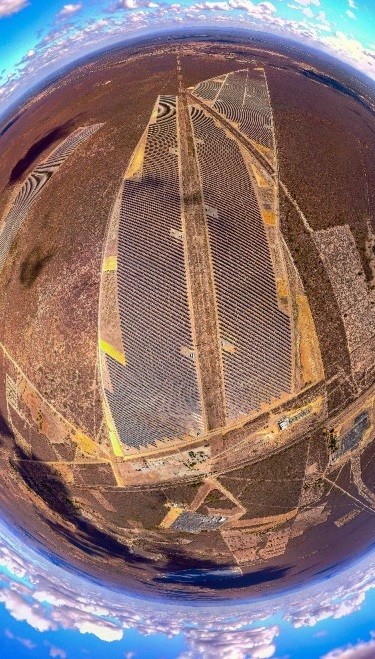“Piauí is a fascinating land of beautiful contrasts. While the cave paintings witness the ancient presence of man in the region, the future is now also represented by Enel Green Power’s culture and innovative technology. The Nova Olinda project brought much satisfaction to the team that was part of the construction and for our whole company”
Difficulties faced with the support of local communities
To build a park of such proportions, away from large cities, the Enel team faced many logistical and regulatory difficulties. Even so, the Nova Olinda project was concluded in just 14 months, which represents a new record for Enel Green Power in works of this stature:
“We worked very hard to achieve this result. Some matters could have impacted the original schedule, but thanks to the collective efforts of our team and our hired companies, we did not delay the delivery of the plant. What I highlight as most important in this achievement is that we worked from the start with unity, partnership and safety. We can only thank everyone involved”
In all projects it develops, Enel Group is committed to creating initiatives that speak to residents and that bring tangible benefits to the communities. Environmental education actions, donation of school materials, recycling workshops and training courses for workers helped to renew the hopes and create new income generation opportunities for Piauí’s population:
“Enel made the effort not only to train us for this project, but also for other works and, in a way, it included us in the world and the marketplace. The people who were already here embraced us as a family and we are very proud to contribute to this beautiful and grandiose endeavour”
Carlo Zorzoli, Enel Brasil Country Manager, says that 2017 is a very important year for Brazil and for the growth of renewable energy in the country:
“Enel is leader in the Brazilian solar market and we want to continue to contribute to the development of clean energy sources in the country, with innovation, sustainability and commitment with the safety of our operations. Nova Olinda is our most relevant project. The transformations the energy sector has been experiencing show there is no turning back from the growth in photovoltaic generation”
Nova Olinda increases Enel’s leadership in the Brazilian solar energy market
Check out the main figures from the largest solar park in operation in South America:
- Around 930,000 solar panels
- 690 hectares of built area
- Annual generation capacity: 600 GWh
- Enough energy to supply 300,000 homes
- 350,000 fewer tonnes of CO2 released into the atmosphere
- 2.5m hours worked, without accidents
- US$300m invested




